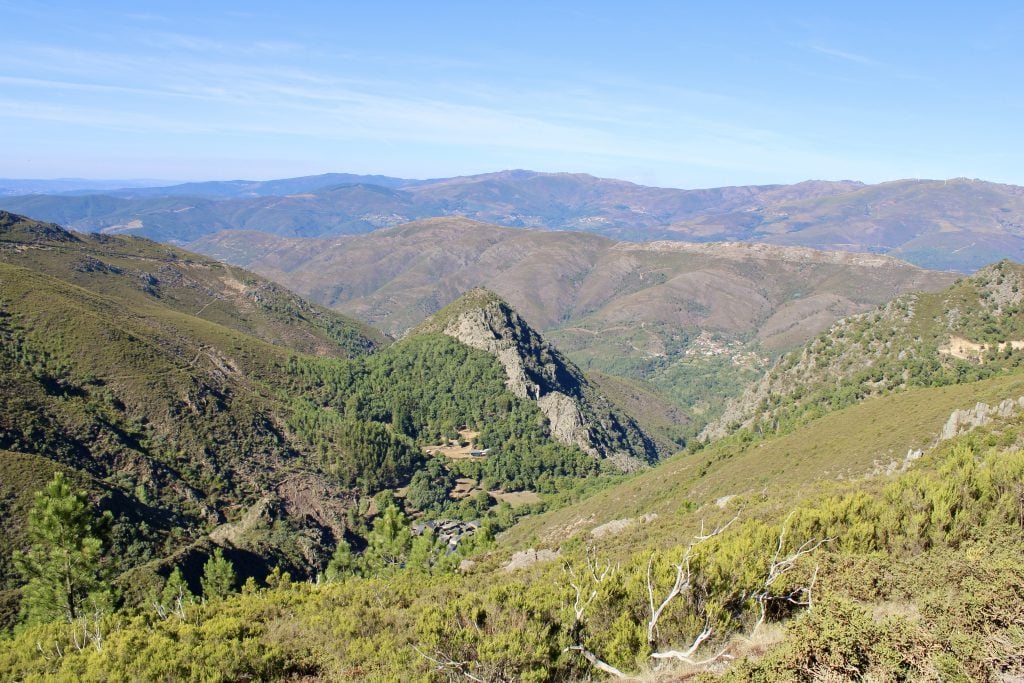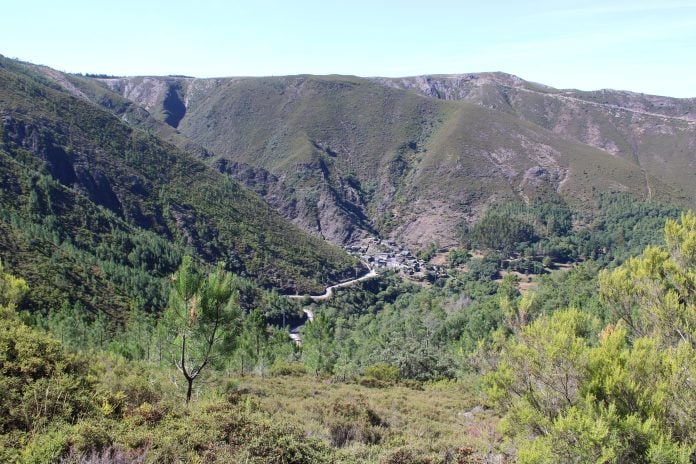The Wonders of the Magical Mountains
Some places touch us in indescribable ways. It feels like the wind that runs through them tells us ancient legends that we seem to have always known within our deepest selves.
Places where we place our feet, and when we breathe deeply, we feel a familiar fragrance that welcomes us! We look around, and upon contemplating so much beauty, we think of settling down and staying there forever.
Places that time has almost left deserted, but that despite their few inhabitants and their difficult access, life persists.
The village that is the subject of this article is one of these places. A village with only six inhabitants, where a central family has an essential weight in the local economy.
A place where one can lead a quiet life away from the hustle and bustle of the cities.
Perhaps this is one of the most famous Portuguese images. This feeling of calmness, coming home and being in an old territory with a lot to tell.
But although there is truth in these words, there is also the misconception that Portugal is only a vast flat land of white sandy beaches.
This image, although beautiful, hides the enormous landscape variety of a country that, although small, has a tremendous diversity to be explored.
The north is mountainous, contrasting with the flatter south. And the center north is that area where the flat land meets huge mountains, from the Serra da Estrela to the massive mountain ranges that we call Magic of the Serras da Gralheira, Freita, Arada, and the Serra do São Macário.
All these areas have created a normal territorial division between the people of the coast and the people from this other distinct culture created by the rocky land that saw them born.
There is then a new image to be constructed. Portugal is also a country with mountains that also create unique feelings, magical, as many would say. And it’s here, in the northern center of Portugal, more precisely in the region of Beira Alta, one can find such a place! And I’m proud to say that it’s my native land!
Unique magic spreads through this vast and misty rocky territory! It is not by mere chance that its inhabitants call them the Magical Mountains. And the visitor who thinks this is just a name to attract tourists should not be fooled. Its magic is found in the beauty of curve after curve, down and up through winding roads. It’s magic for their animals, the cows, goats and sheep that like to pose for a photo.
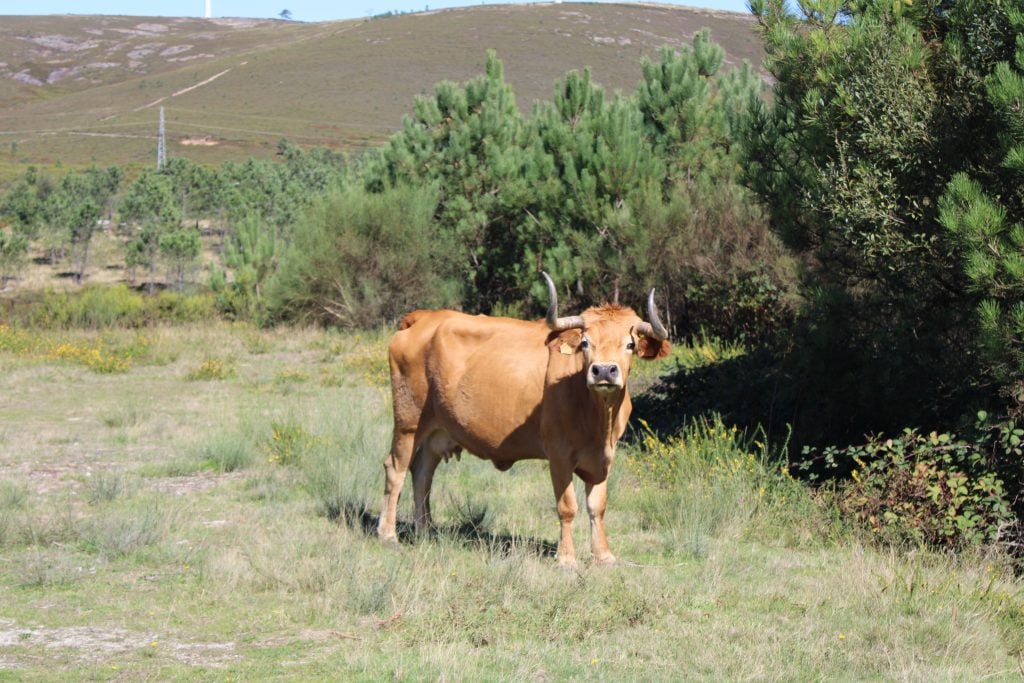
Its hills either take on the feminine forms of a voluptuous woman or become flat on top, filling with unique and different flora throughout the year that cover the mountain with endless colors.
This land turns pink at the beginning of spring when the heather sprouts at the first rays of the sun. At other times it becomes yellow, full of local flora, “carqueja” (Baccharis trimera), which the local inhabitants have used to make a tea that cures urinary infections or to season the meat served at the tables of those who visit us.
And in winter, the mountains are dressed up with olive green mixed with the clouds that touch it at the top, making the place’s mystique even more accentuated.
But this magic goes beyond its natural landscape. We are in the mountains where legends tell of a dead man who killed the living.
Where shale villages have been built in the most remote and unexpected places, and where the local inhabitants have stubbornly persisted in making life in a place where the challenges of accessibility and lousy weather have not stopped the energy that still pulsates.
But of course, not everything is made of romanticism, for even the most beautiful rose raises its thorns. The harsh nature of these mountains and their climate have also shaped the character of those who live there, creating people distinctly strong, hardworking, and used to a life outside the usual comforts of the city.
In summer, there isn’t the slightest wind, and the shale stores too much heat. On the other hand, in winter, the lack of sunlight, the generalized humidity, and the scarcity of insulation in Portuguese houses make life much more challenging. In addition, the winding roads and their dangers are not to be underestimated. Quite the contrary.
On this very day, I am writing these words, and after having gone to satisfy my appetite at “Adega Típica da Pena,” a beautiful restaurant in the remote village of Pena, we were stopped by locals at the top of the mountain before the steep descent to the site. We were warned of a bus being towed away and a driver who thought it was possible to get there with this transport!
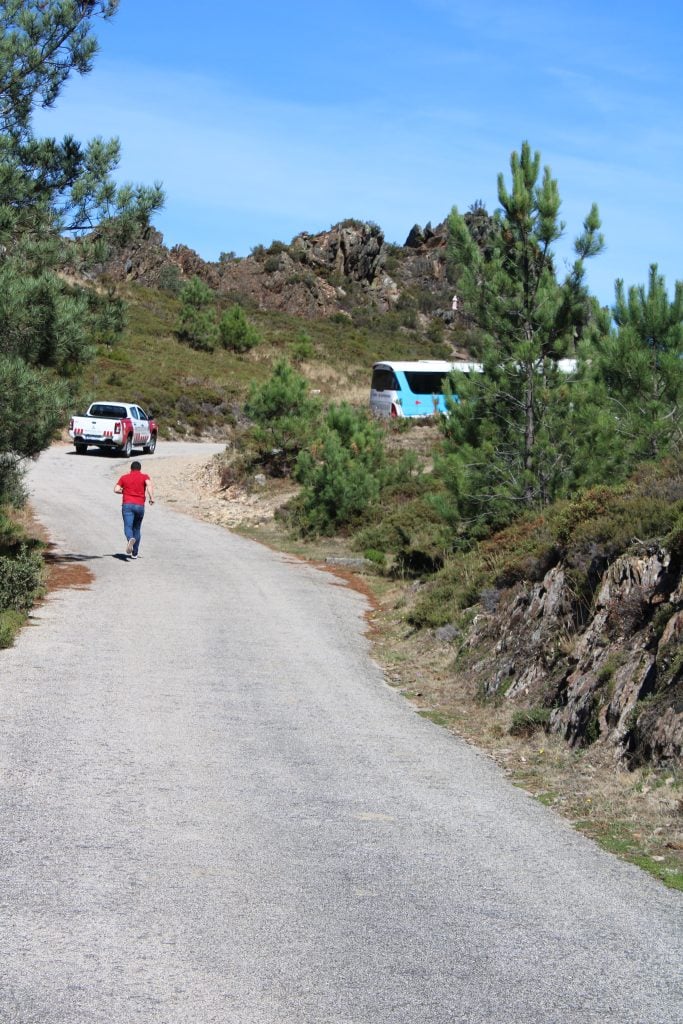
The ignorance on the bus driver’s part had led him down through what was once a goat path. Yet, the road continues to be narrow these days, and even driving in a small car is risky!
But perhaps this strange combination of factors, sometimes beautiful and stormy, makes one of the most remote and once unknown Portuguese territories fascinating!
Many foreigners have chosen the Magic Mountains to call this place their home. To the surprise of many visitors, these foreigners have formed different ways of life here. For example, the hippie community in the small village of Landeira, near Santa Cruz da Trapa, Viseu district, stands out! They have disconnected from conventional ways of life, bathing in our rivers even when winter and fog hang over us.
But besides them, these mountains are also on some tourist routes becoming famous by the day, especially in the integrated network of the renowned schist villages. But also on pedestrian routes or travel guides from various motorcycle clubs who like to race Portugal from one end to the other. For the unfamiliar, these historic villages show a unique “portugality” and are, without a doubt, places of unparalleled beauty worth visiting.
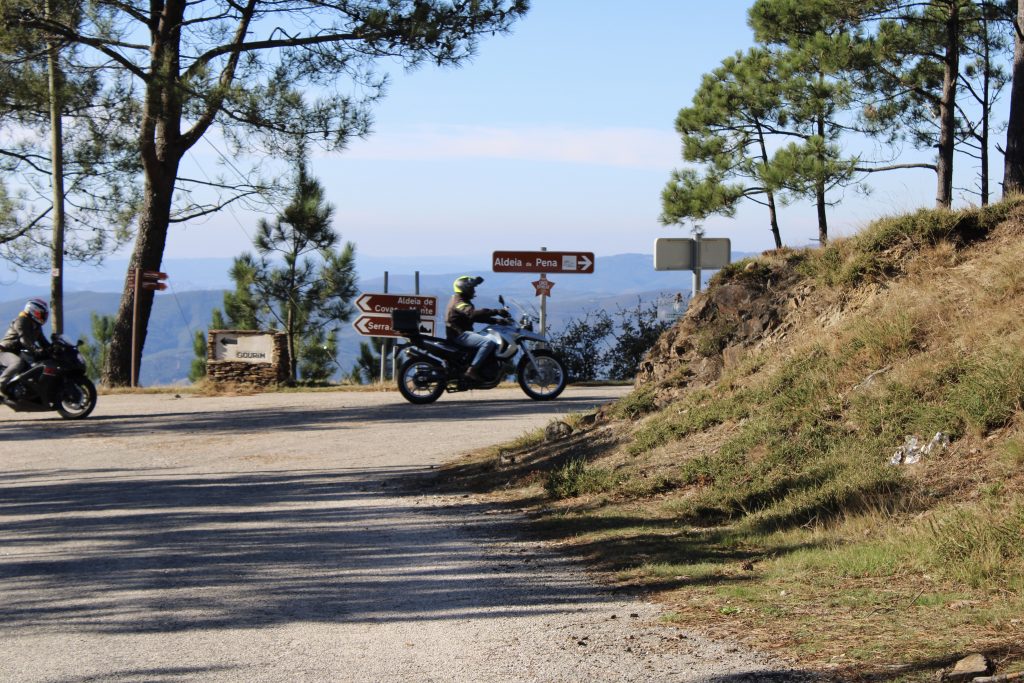
And it is villages like these, with these characteristics, that make up the absolute beauty of this region that is already unique in nature. Among them, Covas do Monte, Covas do Rio, and Fujaco are shist villages where it seems that time has stopped, where we hear water running, birds singing, and where the sunlight that falls on these shist houses seems to fill the roofs of gold such is the light that these rocks emanate from you.
Arriving at Aldeia da Pena
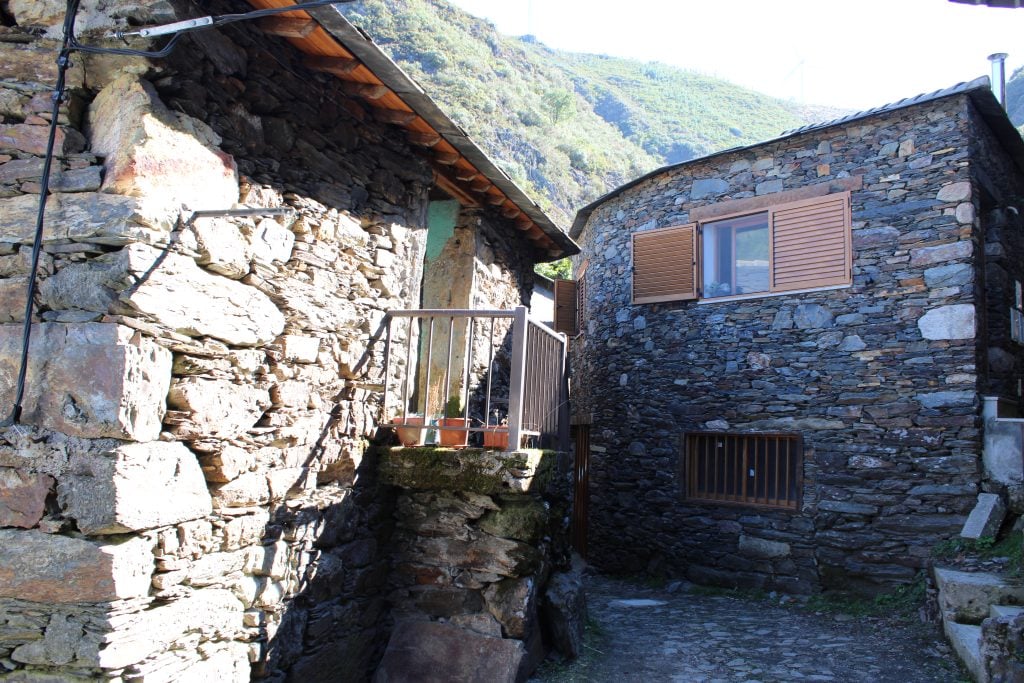
But of all the various villages, the one that takes the queen’s crown is also one of the smallest in Portugal. It is our exquisite and picturesque “Aldeia da Pena.”
This village, located in the São Macário mountain range, is one of the most remote villages in the country. Because of its singular beauty, it participated in the contest for one of the seven wonders of Portugal, and it’s a must on the route of the famous “Aldeias de Portugal” (Villages of Portugal).
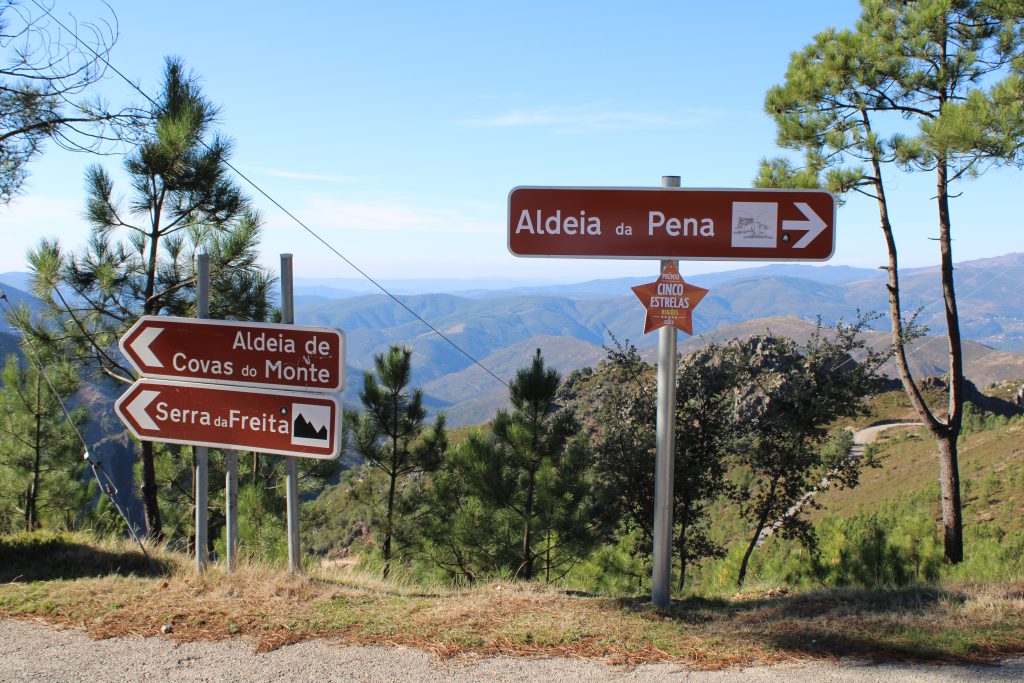
The visitor has several alternatives when it comes to getting to Aldeia da Pena. You can come towards Serra da São Macário through the village of Sul, going up the M559 and continuing up the CM1216.
Or take the direction of Carvalhais, towards Sá, going up the Serra da Arada by the CM1225, where further ahead, you can stop for a photo at one of the many wooden swings scattered throughout the mountain. When you reach the first crossroads, you will soon see the signpost indicating the way to Pena, where you will turn right and continue along a winding road.
Another option is to take the road to Santa Cruz da Trapa, direction Fraguinha, and before you reach the stop, turn to Coelheira and continue the road. Eventually, you’ll find the same crossroads as those who took the road to Carvalhais and continue that road until you reach Serra da São Macário.
However, on getting to the summit of the Serra da São Macário, there is only one single and very narrow road that will take you to the village, and caution is required while driving.
The descent, about five kilometers, has to be done with caution on a road where sometimes the potholes are predominant and where at some points, the recent widening of the road left it uncovered, creating dirt tracks.
Once in the village, the cars are left at its entrance, in a parking space that cannot accommodate more than ten cars. But if some criticize the lack of parking, these details are essential so its charm can continue in one of the most picturesque places in Portugal.
Pena’s Last Family?
“Aldeia da Pena,” now so popular, was almost left behind about fifteen years ago. And it was around this time that RTP, a Portuguese television channel, reported on the village’s last child, Mariana, who was eight years old. The piece was melancholic, immersed in the typical “saudade” (longing) for a forgotten Portugal, showing Mariana’s daily trip from the village to the school located about twenty kilometers away, among curves and counter-curves.
It seemed that it was it! That it was the end of Pena, a noun that has a double meaning as it also means pitty. It would have indeed been a pity if Pena died. But taking another meaning of the word, “pena,” also means something is worth it. In this case, this is a village worth paying a visit to.
Almost fifteen years later, and we went in search of Mariana and her family to know more about the life of a village that has resisted all its adversities.
When we arrived, a sign in the shape of a frame welcomed visitors who could take their souvenir photographs. Behind it, the restored shist houses made up the architectural composition of a green hill. And continuing our way, the restaurant “O morto que matou o vivo” (The dead who killed the living) presents itself as a kind of gateway to the village.
And although small, a set of arrows and signals show us what to visit. There is a bookshop, Senhora Augusta’s handicraft, the Main Street where humans, goats, and sheep walk by, and another restaurant, “Adega Típica da Pena,” right next to the other.
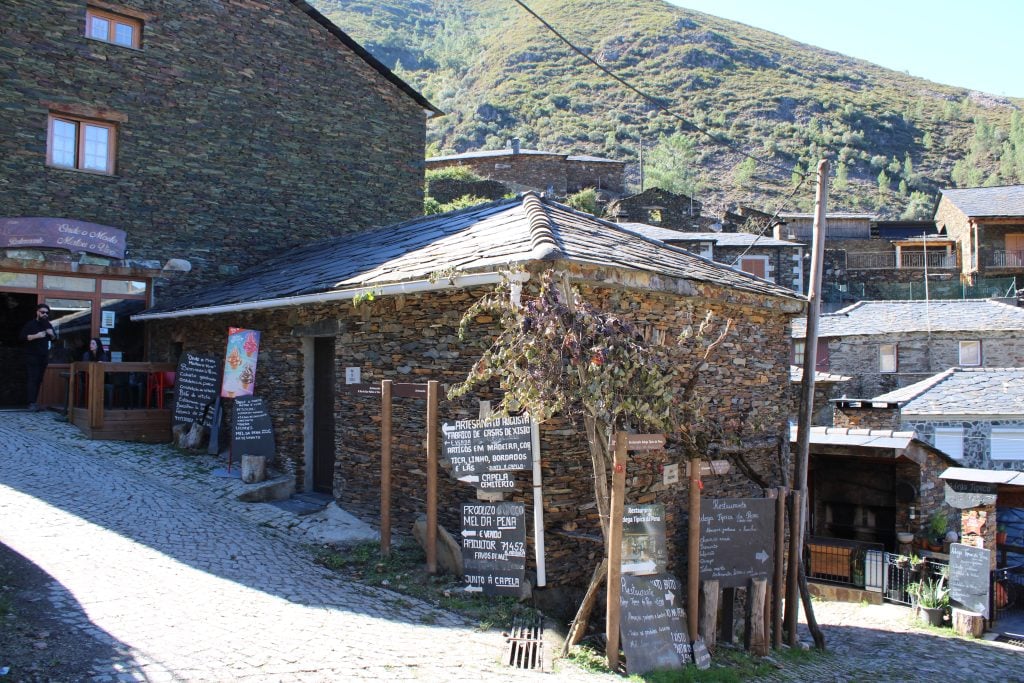
Both establishments display their five-star emblems, with the various recommendations from well-known national newspapers indicating awards for good food and proper sleep.
We wandered around Pena, walking to the sound of goat bells. And between narrow streets, we bumped into the small handicraft store of Mrs. Augusta, who, trying to escape the still warm Fall sun, was sitting at the door of her establishment. We immediately said “good afternoon” and conversed with one of the oldest voices in the village.
Ms. Augusta immediately put us at ease, inviting us into her small establishment to shelter from the sun. She also told us briefly about her life, and because she has a low-income pension, she has this small store trying to earn extra cash.
With her wise words, we travel to a pastime with her, when people were either born or died there without being registered. And among the stories of deaths, in a small village that, despite its size, has a chapel and a local cemetery, we could not miss the famous legend of the dead who killed the living.
“That’s a well-known one,” she told us.
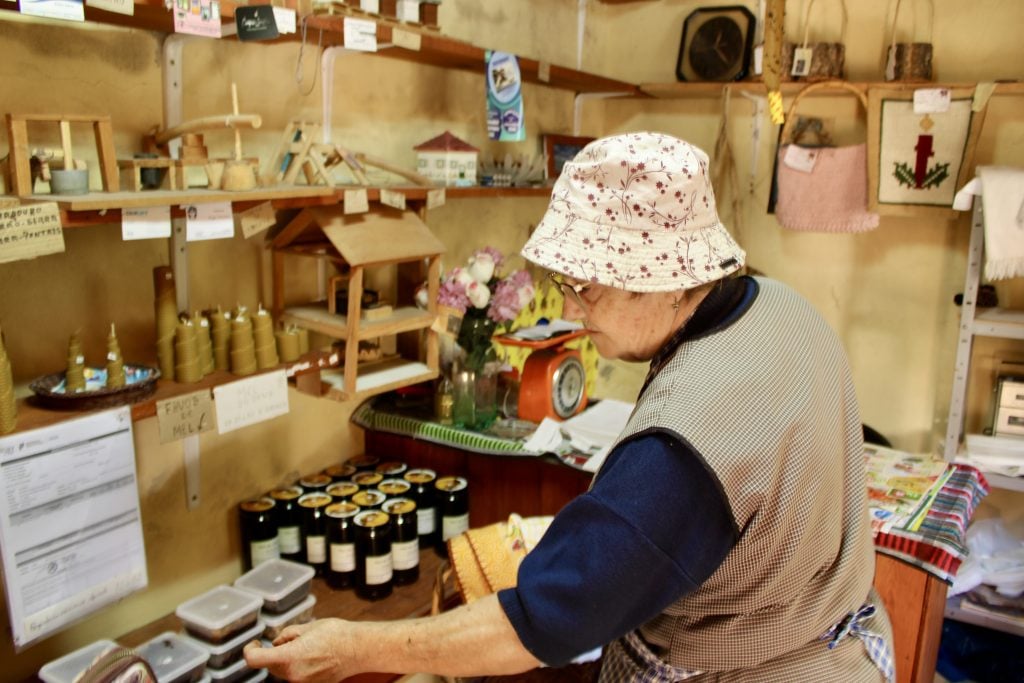
“They say it was just like that. A man had died here in Pena, and the living were carrying him to the next village, Covas do Rio. You see, there are many hills here, and one of the men slipped, and the dead body hit him and killed the one ahead. It’s a story everybody knows about,” she told us earnestly.
But besides the stories and good conversation, the small handicraft store offers tourists honey jars and honeycombs, which we could not resist buying. There are also pieces made of wood and stone, all handcrafted by her husband, “Senhor António,” who on that day went hunting.
But there are also all sorts of teas and little lavender sachets aromatizing the place. All of which can be bought at a reasonable price. But please, don’t forget to bring cash. There are no ATM machines here!
We then asked about little Mariana, expecting the typical answer that she would already be out of there. But to our surprise, Mrs. Augusta told us how Mariana lived there, that she worked at the restaurant “Adega Típica da Pena” and even had a younger sister who helped her.
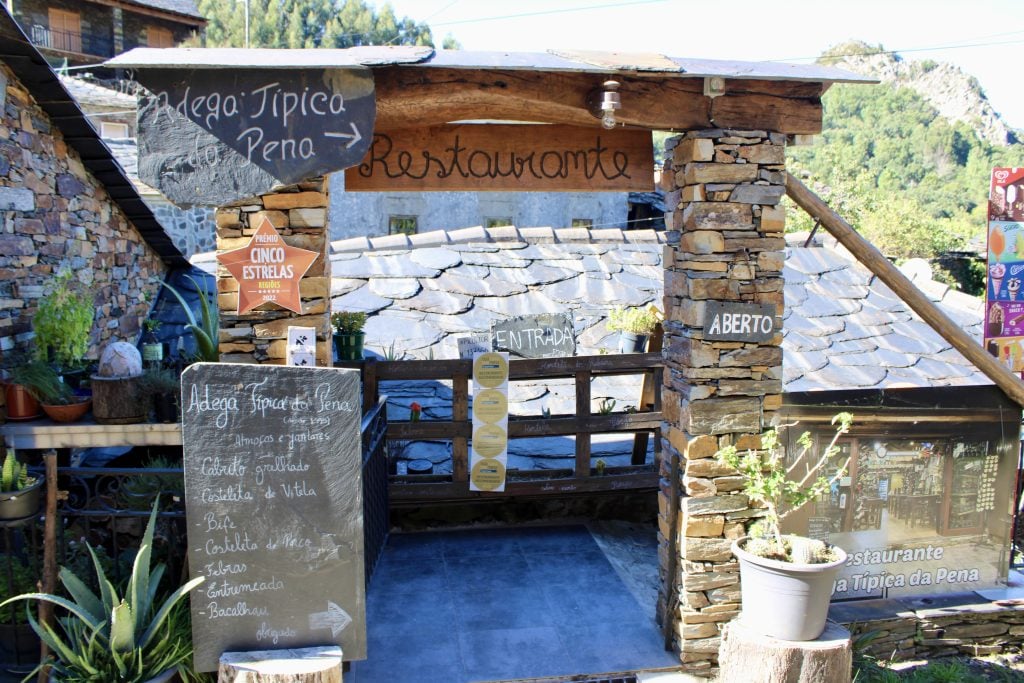
We said goodbye and walked straight ahead to the place. In such a small area, visitors find it difficult to get lost. The restaurant is right in the middle of the village. We entered and walked down a ramp, and under a vast branch of vines full of black grapes, several visitors were eating, drinking, and having a good time.
But beyond the human landscape, one could glimpse an even more idyllic one from the terrace. A view of another mountain, between cliffs, trees, and a breathless view!
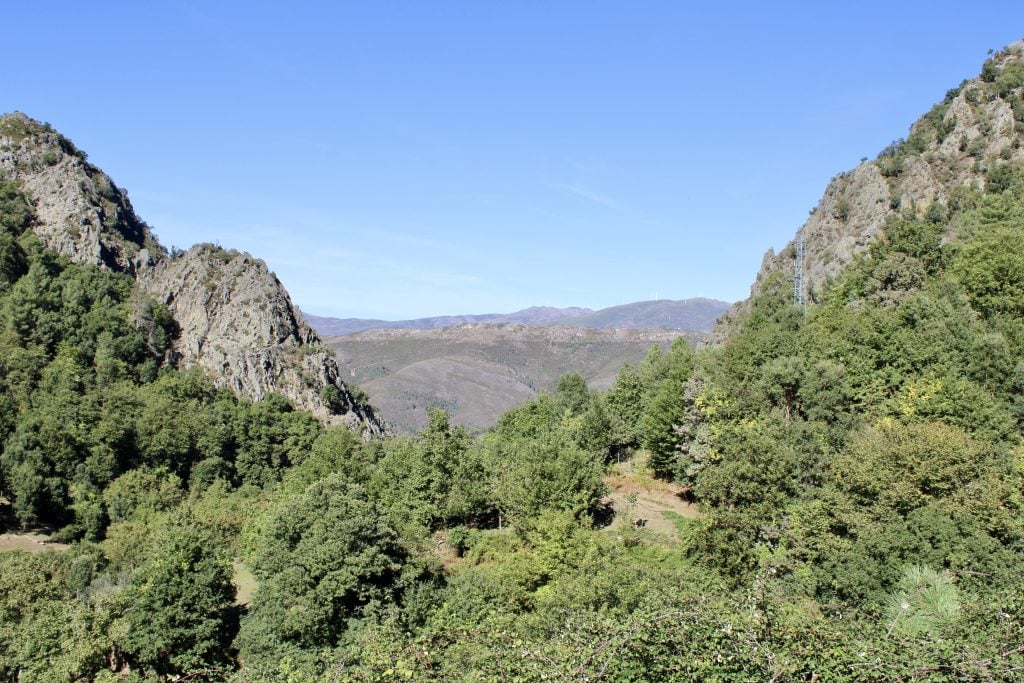
We entered the restaurant, continually awestruck by the picturesque beauty of the space. Schist tables, wood ceilings, perfect light, and notes of dollars, euros, and all kinds of world currencies hanging from the ceiling and on the walls— a sign of the many visitors who pass through there.
And then, behind the counter, receiving money and giving change, a short, nice-looking young woman, full of energy, smiled at us, camera in hand, ready to be photographed.
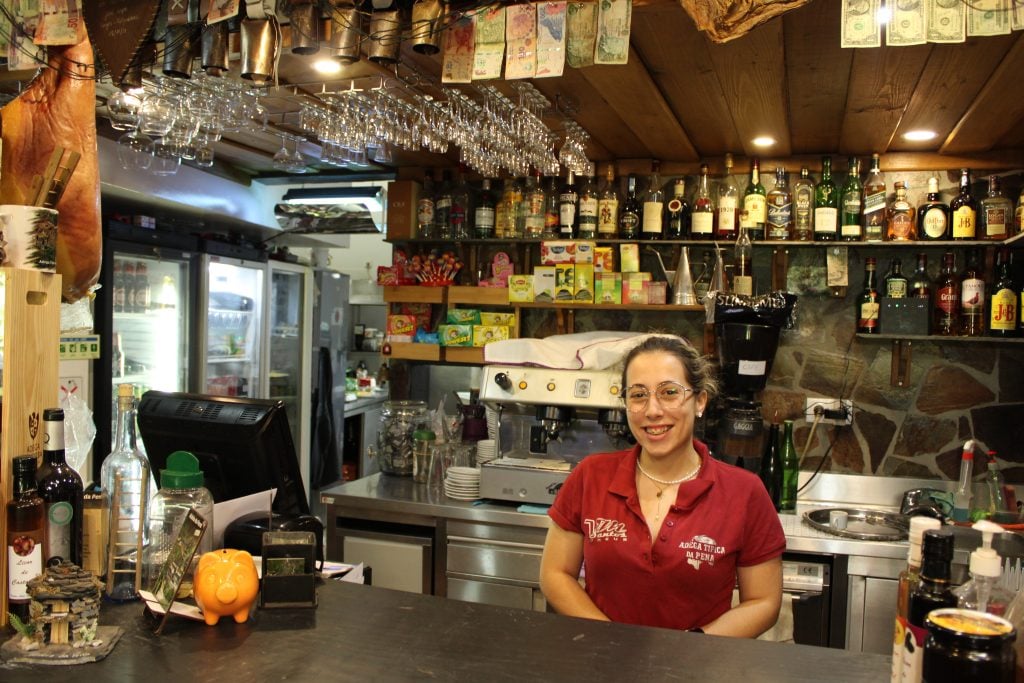
Our first words were to ask if she was Mariana, and what a pleasant surprise to see that we were talking to her!
We waited until she granted us a few brief minutes of conversation. But before we started our exchange, we didn’t even need to ask her if she liked living in the village as her look of happiness and contentment spoke for itself.
“I live here and will. This is where I want to stay!” she told us promptly!
At her beautiful twenty-two years of age, Mariana told us how she is finishing her degree in Food Engineering in Viseu and plans to apply her knowledge there and help the family business.
“I study inViseu during the week and work here at the restaurant to help my parents during the weekend. I’m taking this course exactly, planning to stay here, and mainly taking my parents’ business forward. I don’t want to let it perish!”
It was a pleasure to see a young woman countering the direction of the brain drain to the coast. She also told us about the most challenging days in the village. Those winter days when they only have three hours of sunshine and where the flow of tourists decreases, as opposed to summer and Easter time which usually fills up with people.
While talking to Mariana, we heard the sound of sheep and goats, and almost as if she knew them all, Mariana told us not to be afraid, that the animals were all friendly, even the big-horned male goat that was in another street next door!
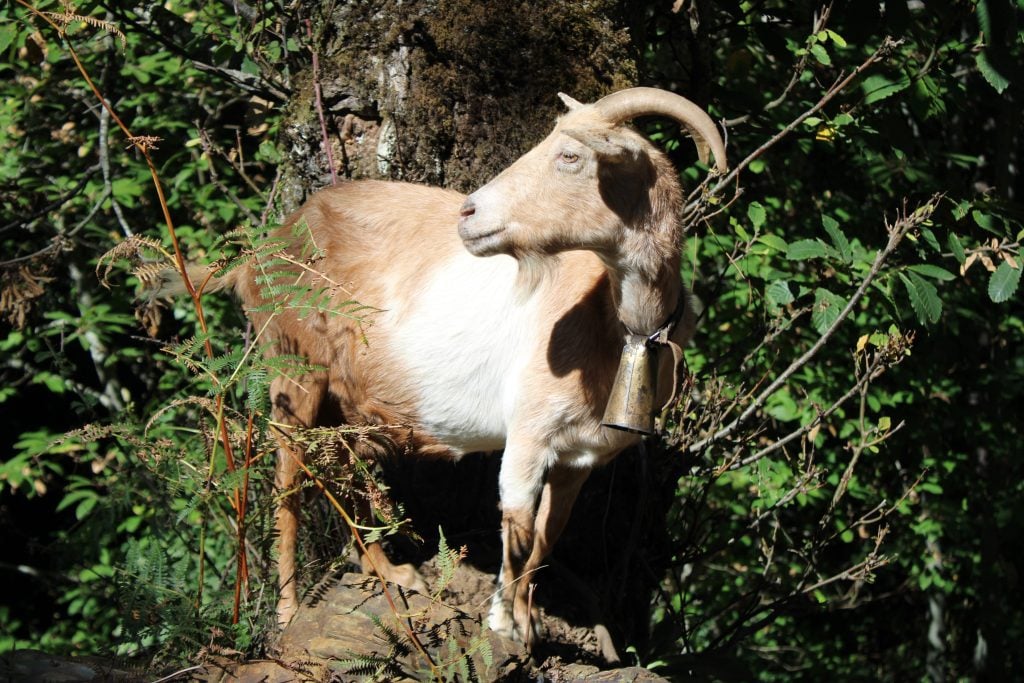
She also told us about the evolution of the establishment. When it opened in 1999, the restaurant was nothing more than a small local tavern. But with the expansion of the family business, the space has been continuously expanded and can hold about forty people between the interior and the terrace.
And while talking, she sometimes went to the tables to answer customers’ requests. And with our bellies already rumbling, we sat down for lunch.
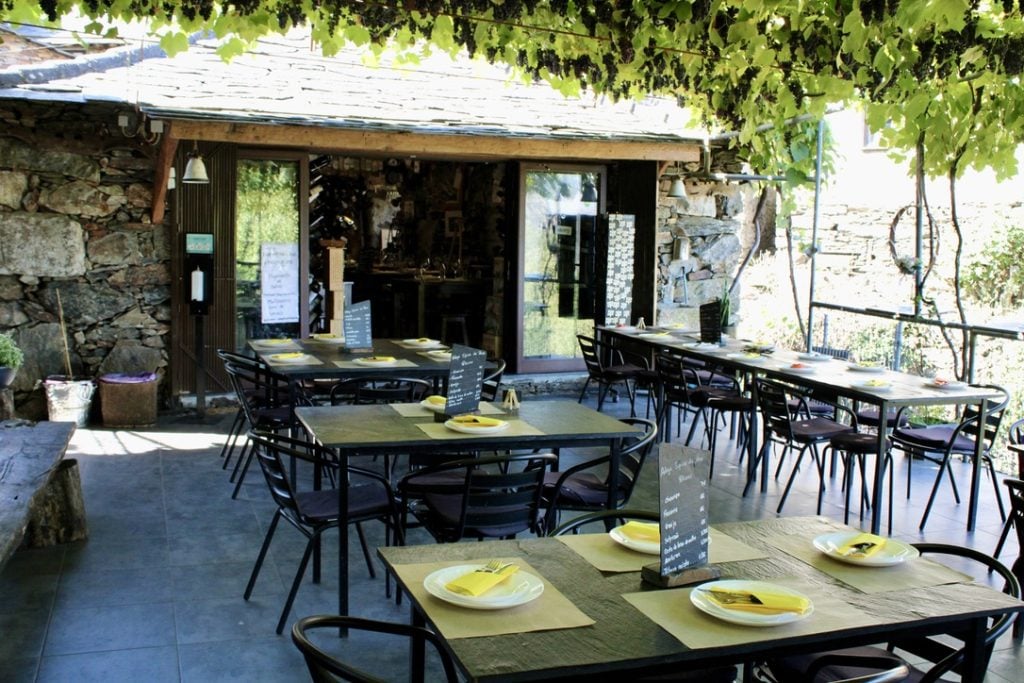
For those looking for typicality in food, going to the village of Pena is like going to a sacred place where the knowledge passed down from generation to generation has the magnificent result of surprising our taste buds.
Dishes such as grilled baby goat with bean rice, cabidela rice (chicken’s rice with chicken’s blood), wild boar, and roasted veal from the region make up the menu. We then sat at one of the tables on the terrace, ready to eat.
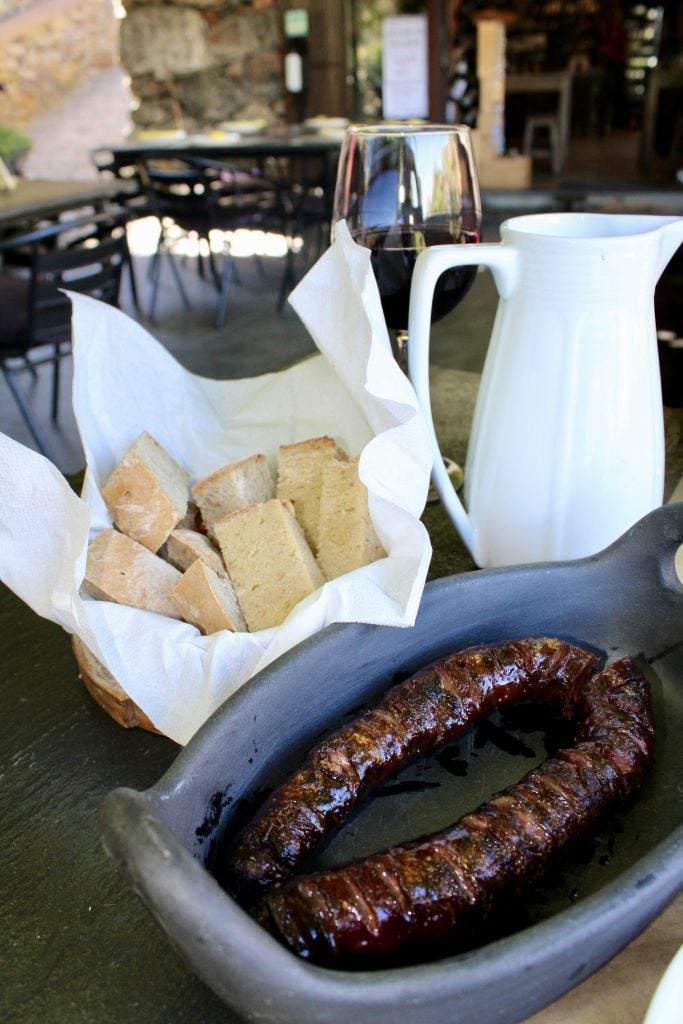
The starters were varied, with a choice of sausage and cheese, olives, cornbread, rye bread, chorizo, ham, and “salpicão” , another pig’s sausage!
We opted for the “chouriça,” drank one of the best house red wines we have ever had, and ate crunchy bread.
We could almost have stopped there if Mariana hadn’t brought the grilled baby goat, the bean rice in a small ceramic bowl, and a salad with vegetables from their farm.
We ate, drank, and disconnected from the busy world of everyday life, letting ourselves be carried away by the friendliness, the food, and the landscape.
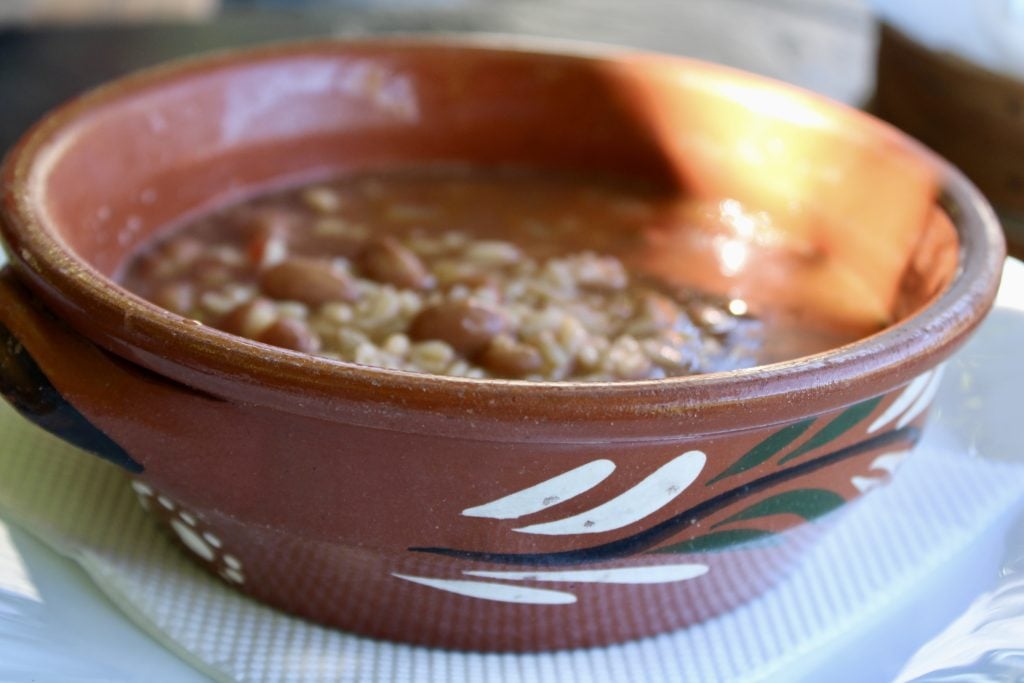
The meal would not be finished without tasting a delicious chocolate cake or an almond tart. But the list continued with pannacotta, cookie cake, Passionfruit cheesecake, Serra da Estrela cheese with jam, or a slice of melon for those who want to get away from sugar.
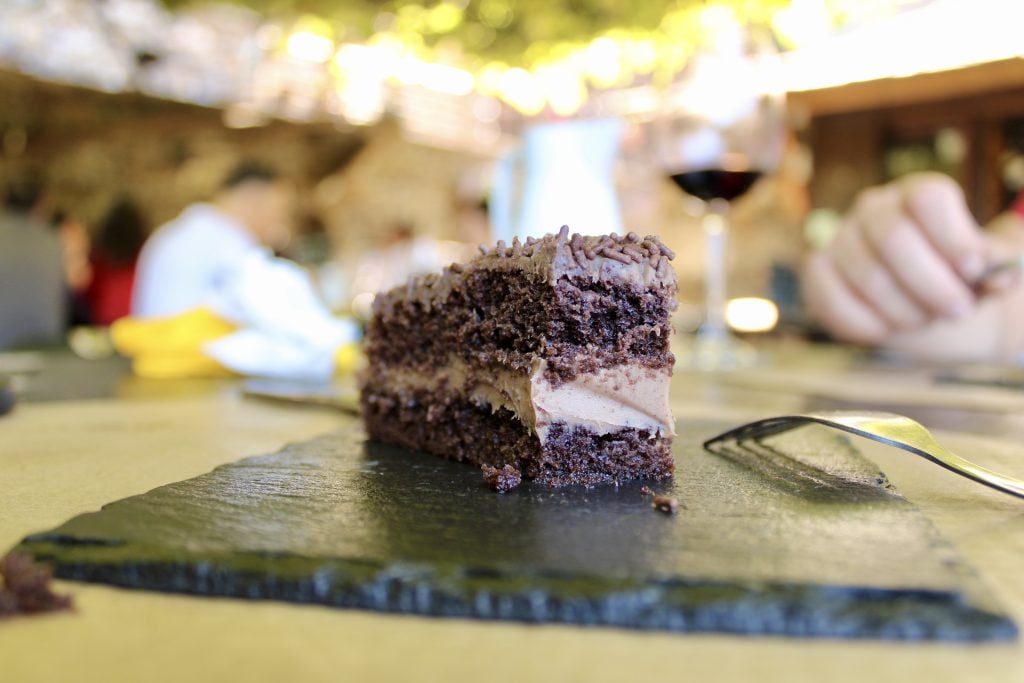
We stayed there for a few more minutes, contemplating that moment so that it could be eternalized in our memories. We then left, saying goodbye to Mariana and her family and promising to return soon.
As we walked up the small road that led to the car, tired and sleepy from the meal, we wondered how we would make it if we had to climb all the way to the top. We gave thanks for modern life and went home by car.
On the way out, we again noticed the frame-shaped sign. Even though a few letters were missing, the sign read, “It’s worth coming to Pena.” We confirmed the veracity of those words.
But these mountains, which are located a little more than an hour southeast of the city of Porto, are not yet on the most popular tourist route in Portugal.
Some will say it’s a good thing, and others will say we need crowds here too. But, as in almost everything in life, moderation is required. And in the case of tourism, we need sustainable tourism, adapted to the conditions that this land has to receive tourists.
The case of the bus that ventured onto a forbidden road is evidence of how tourism needs to be regulated so that it does not lose quality or damage the environment that is the main attraction of the mountain.
Despite the challenges, pay us a visit and let yourself be enchanted by a land with a lot to offer. It’s worth it!
